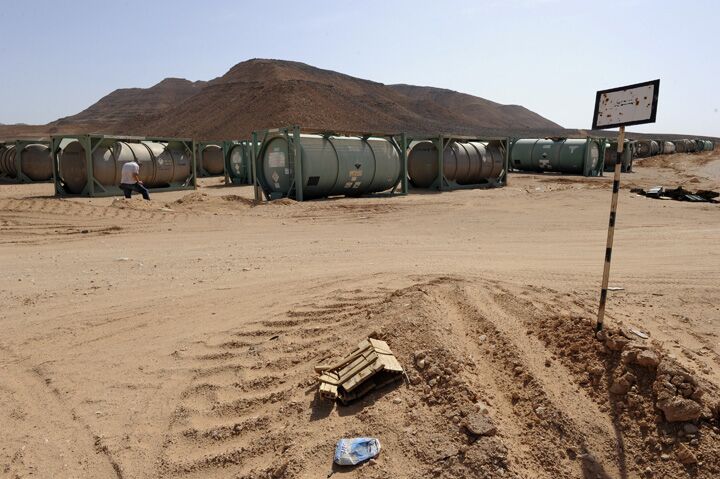
About Those WMD in Syria
When the highly controversial Iraq War failed to uncover the massive stockpiles of weapons of mass destruction in Iraq, the mainstream media went berserk. After David Kay, then head of the Iraq Survey Group (isg), concluded in January 2004 that wmd would probably not be found, online news sources produced nearly 10,000 stories about the “missing” wmd over the course of one month.
Prior to that time, of course, the experts, security officials, United Nations inspectors and media elites were in unanimous agreement: Saddam had wmd, he used them not once, but several times, and he knew how to build more and had the means to continue doing so.
But none of this mattered after the Iraq War. All that mattered in 2004, in the minds of the liberal establishment, was that the gunslinger in the White House had lied to us about those stockpiles.
And yet, even as the isg was putting the finishing touches on its politically motivated report in 2004, a massive chemical weapons attack was narrowly averted in, of all places, Jordan. In April of that year, Jordanian authorities arrested al Qaeda operatives possessing 20 tons of chemical weapons they planned to use in an attack on top Jordanian government offices and the U.S. Embassy. It was estimated that the attack, had it been successful, could have obliterated more than 20,000 people. Despite the large-scale nature of the would-be attack, media coverage was scant.
Jordanian authorities said the weapons came from Syria. Few people, however, were curious about how Syria may have obtained those chemical weapons.
At the time, my father asked, “Have some of Saddam Hussein’s weapons of mass destruction (wmd) been found in Jordan?”
John Loftus, former Justice Department prosecutor and terrorism expert, was one other lone voice who wondered about the source of those weapons. He said at the time, “There’s a lot of reason to think [the source of the chemicals] might be Iraq. We captured Iraqi members of al Qaeda, who’ve been trained in Iraq … and now they’re in Jordan with nerve gas. … You have to have obtained it from someplace.”
More recently, columnist Dore Gold offered this concise analysis: “It is not entirely clear where [the terrorists] obtained tons of chemical weapons from in 2004, but what is known is that the borders between Iraq, Syria and Jordan were completely open. Anyone with a truck full of chemical or biological weapons—or a nuclear bomb in the future—could make his way across the desert and penetrate his neighbor’s territory.”
As it happens, there were reports in 2003 of significant truck movement between Iraq and Syria just prior to the U.S. invasion. According to Loftus, who has had access to some of the highest security clearances in the world, “The best U.S. and allied intelligence say that in the 10 weeks before the Iraq War, Saddam’s Russian adviser told him to get rid of all the nerve gas. … So they shipped it across the border to Syria and Lebanon and buried it.”
Loftus also cited Israeli intelligence officials and a Syrian journalist who defected to Paris as credible sources that had identified three places in Syria where chemical weapons had been buried. Additional evidence from Iraqi documents seized during the war indicates that Iraq received assistance from Russia in transporting weapons and missile components across the border.
All of this evidence was later corroborated by one of Saddam’s former generals, Georges Sada. He says he is “absolutely certain” wmd were transferred to Syria just before the war started in 2003.
Today, with Syria engulfed in civil war and Bashar Assad’s regime teetering in the balance, there is an understandable degree of panic about what might happen to Syria’s chemical weapons in the event of a regime change. Columnists Dore Gold and Melanie Phillips both highlighted possible doomsday scenarios that could play out regarding the stockpiles. Syria could use them on foreign “attackers” as it threatened to do last month, should the international community attempt to intervene in the Syrian civil war. Or the weapons could fall into the hands of Hezbollah or other terrorists, either amid the chaos of a fallen regime, or via the Syrian government simply handing them over to terrorist allies before surrendering.
These are all valid concerns that have been raised by a number of Western officials and media outlets.
Hardly anyone, though, has bothered to ask about how Syria managed to acquire such a massive stockpile of wmd. Syria’s short-lived nuclear weapons program was obliterated by an Israeli airstrike in 2007. It hasn’t used wmd on its own people like Saddam did. It’s never had the reputation for being a large-scale manufacturer of wmd—certainly not like pre-2003 Iraq.
And yet last month, when Assad’s government acknowledged that it possessed a deadly arsenal of weapons of mass destruction, no one doubted the claim. There were no intelligence reports theorizing that Syria suspended its wmd program years ago—or saying that the stockpiles simply do not exist.
No—everyone knows they exist. But no one asks how they got there in the first place, because raising that question would lift the veil covering the media’s shameful record of deception and lies.
